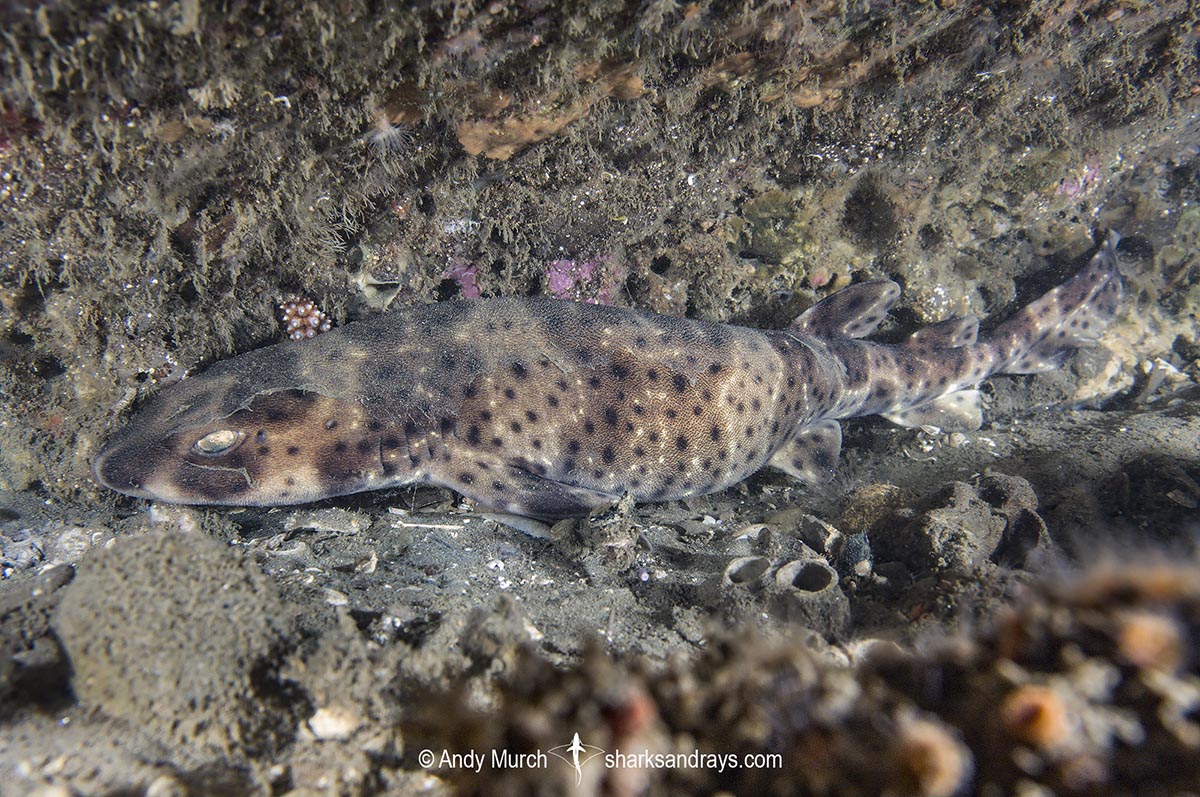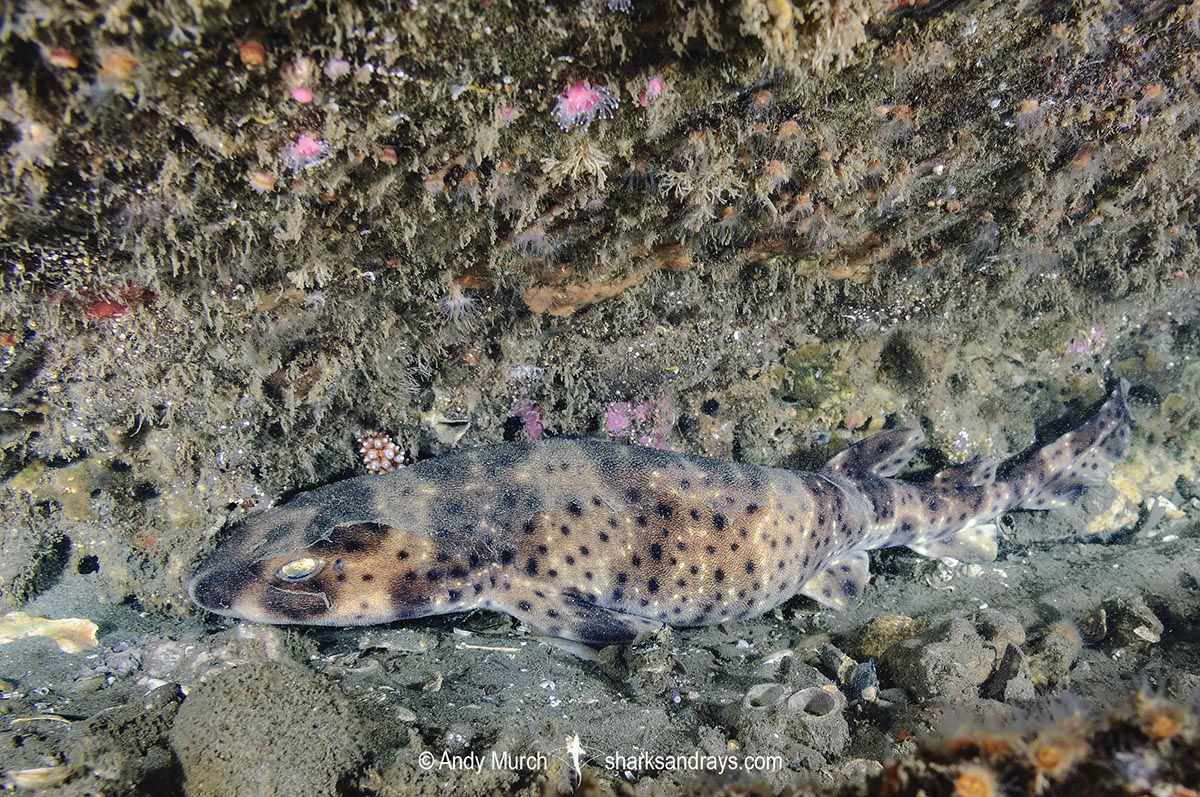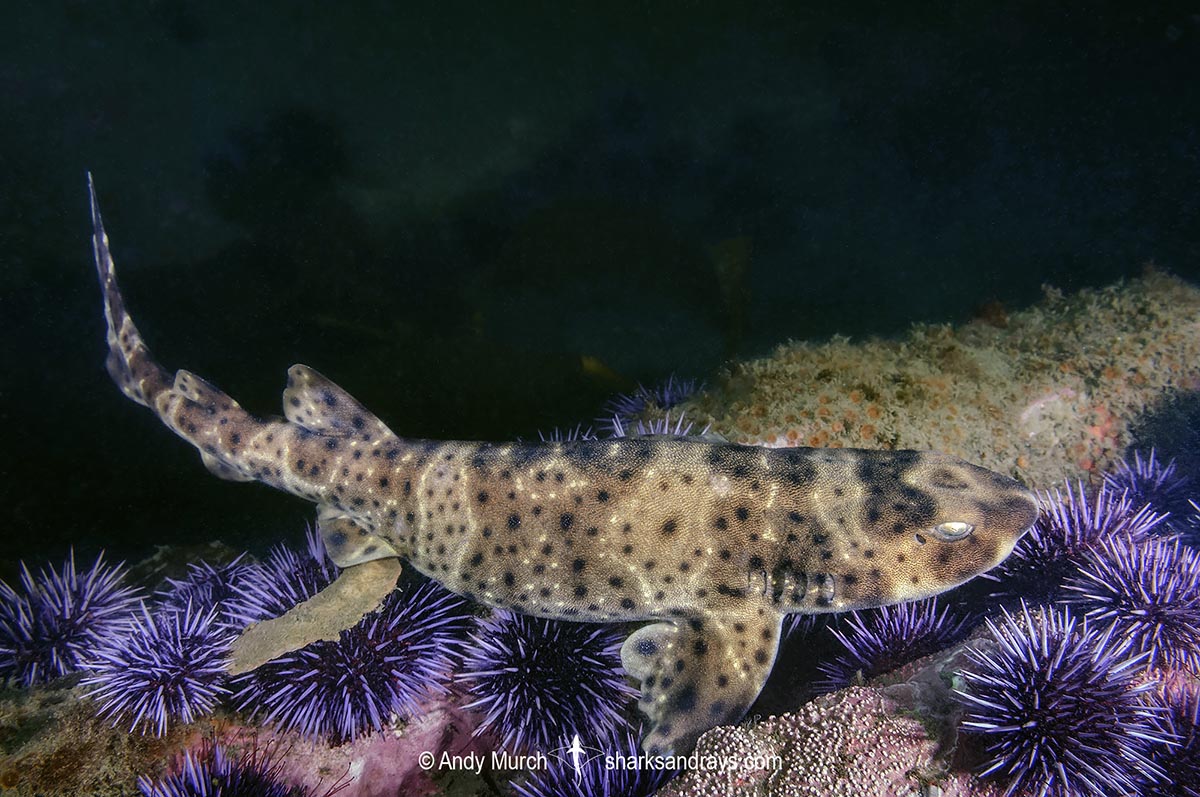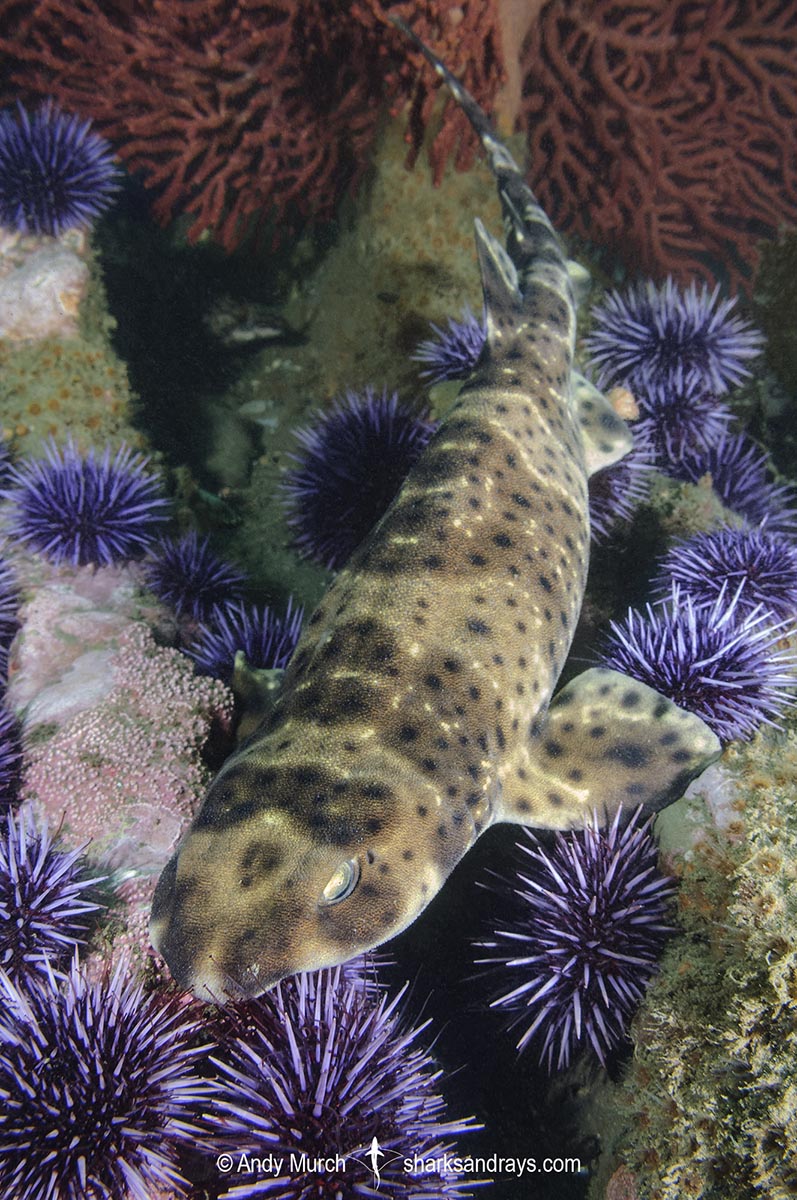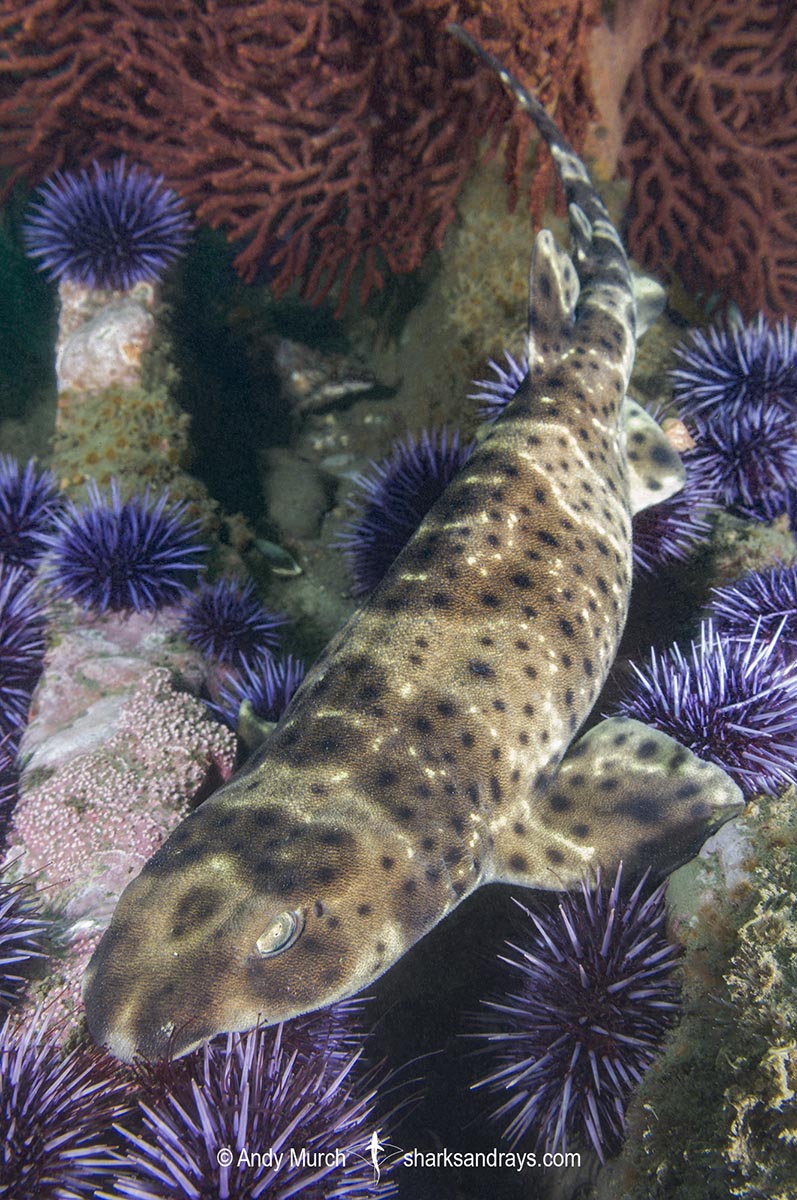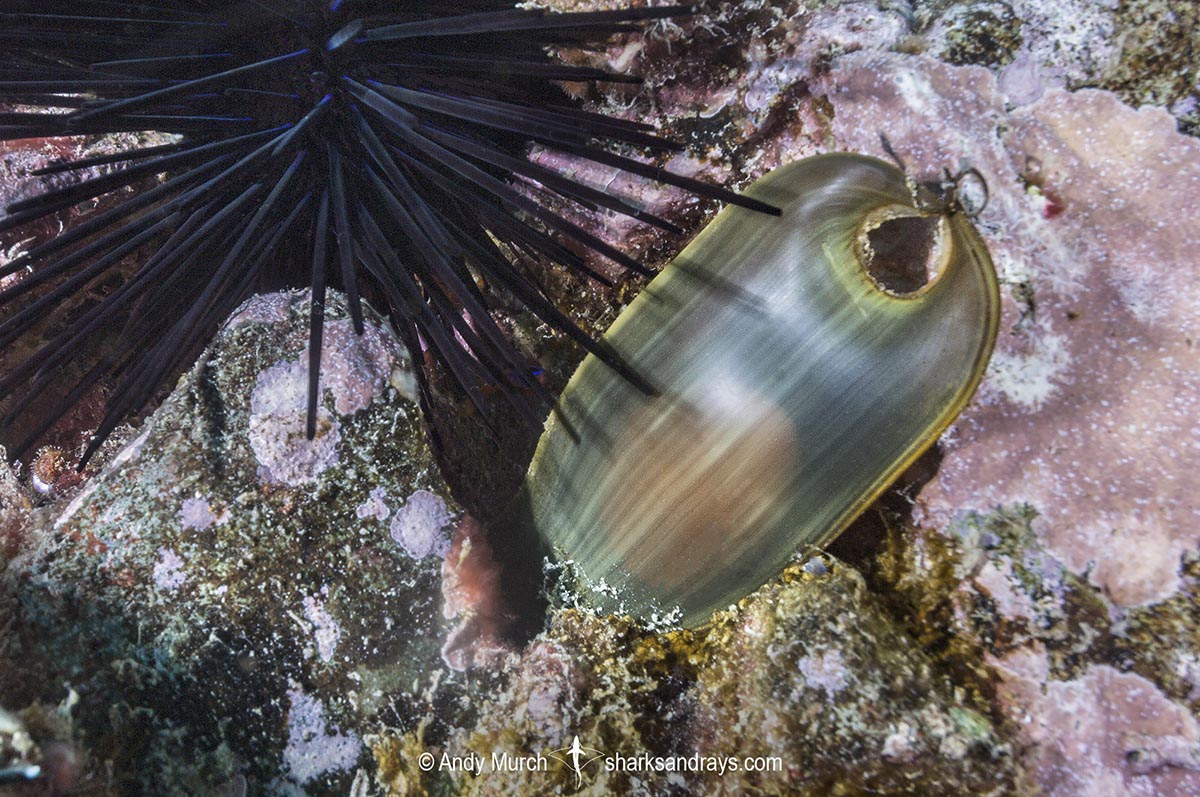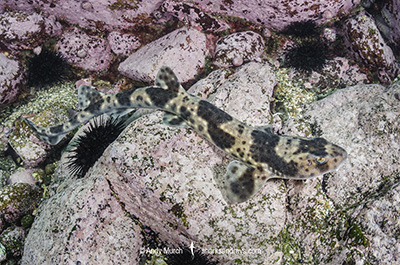Common names
Swellshark, California Swellshark.
Binomial
Cephaloscyllium ventriosum.
Synonyms
Catulus uter, Cephaloscyllium uter, Scyllium ventriosum.
Identification
Stout body. Snout short and bluntly rounded. Mouth width approximately 3x snout length. First dorsal origin posterior to level of pelvic fin origin. Second dorsal fin level with anal fin origin. Anal fin much larger than second dorsal. Anal fin apex acutely rounded. Lower caudal lobe broad but poorly defined. Dorsal surface covered in irregular brown saddles on a lighter brown base, and scattered black spots. Saddles outlined by broken rows of small cream coloured spots.
Size
Maximum length approx. 100cm. Size at birth 13-15cm.
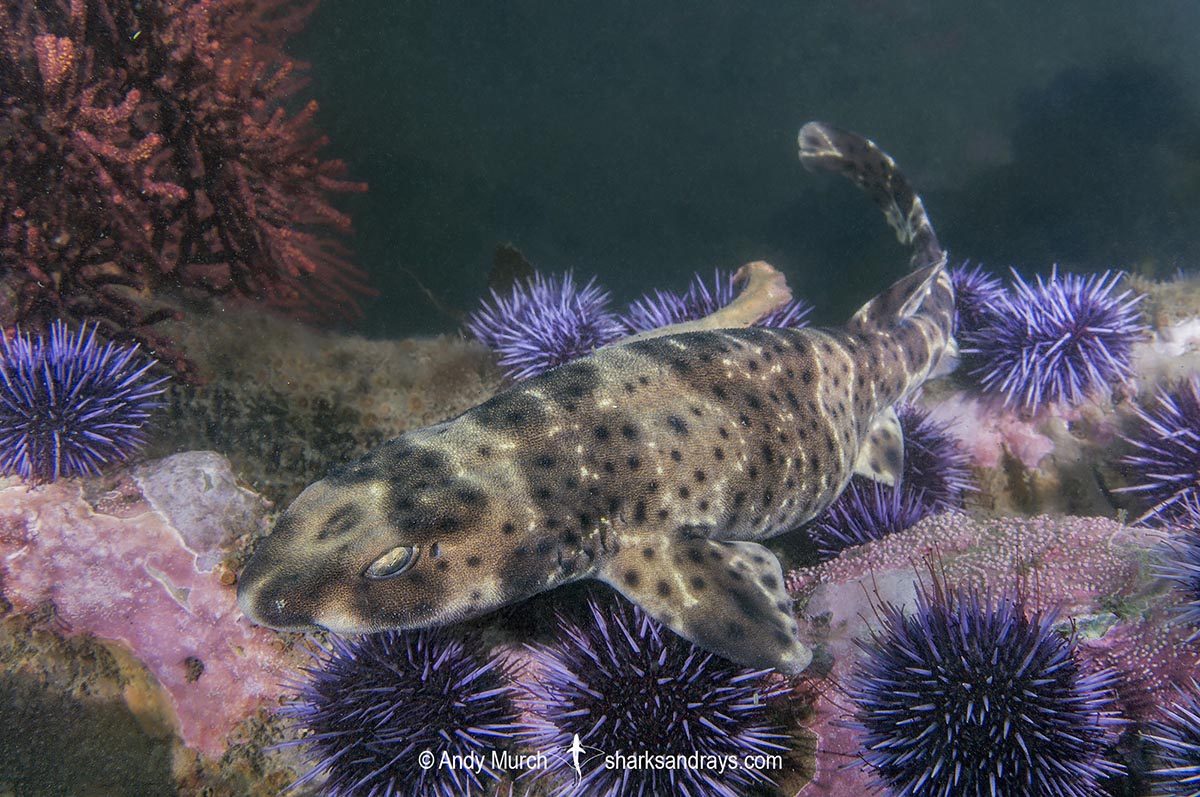
Conservation Status
LEAST CONCERN
The swell shark is not targeted commercially in California, but is a minor bycatch in gillnets, trawls, and lobster traps in Mexico. However, in Mexico, fisheries data often lists small shark as “cazones”, so the actual quantity of swell sharks being taken in Baja California could be significantly higher than documented.
No information exists on the disjunct sweel shark population in Chile.
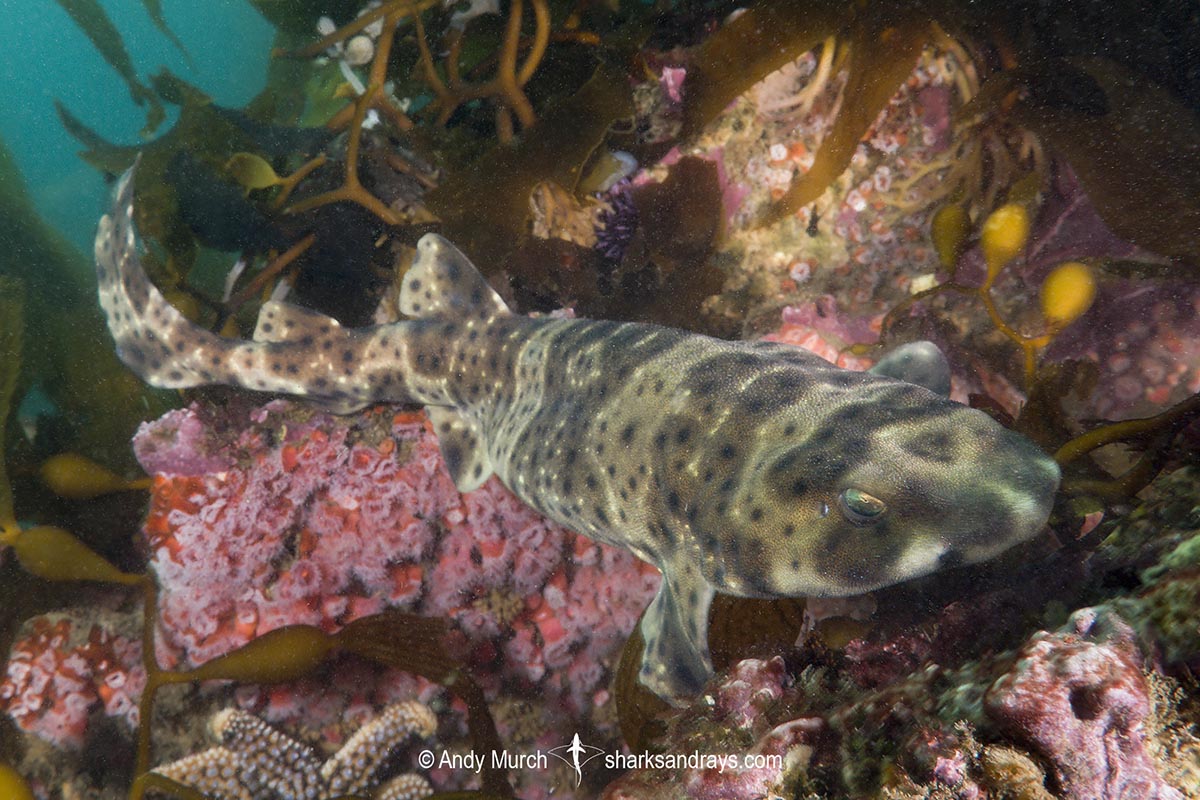
Habitat
Temperate/sub-tropical rocky reefs, kelp forests, and somtimes on continental shelves. 5m to 457m but usually found on shallow reefs down to about 40m.
Distribution
The swellshark is found in the eastern Pacific from northern California to Mexico, and in central Chile. Records from in-between these areas are sparse or non-existent.
Reproduction
Oviparous. The swell shark produces large flattened egg cases that are 9-12.5cm long and 2.8-5.5cm wide. When stretched out, the egg’s adhesive tendrils may be more than 150cm long!
Diet
The swell shark feeds on small crustaceans and annelid worms.
Behavior
Swell sharks remain in deep crevices during the day. They are able to suck in water to inflate their bodies. This may make them more intimidating to predators, and it may help them stay in position against the pull of surge within the reef.
Reaction to divers
Easy to approach when resting on the reef. Not known to respond to chum.
Diving logistics
Easily encountered at numerous dive sites in Central and Southern California. Kelp forests that have large shelves of rock for swell sharks to hide under, are prime habitat.
Refugio Beach is one area where I have seen numerous swell sharks on a single dive. Refugio is a popular shore diving site north of Santa Barbara.
In this area, long ridges of rock run parallel to shore; probably sculpted by the surf. To find swell sharks, simply drop into one of the shallow gullies between the rock ridges and look in the shadows with a dive light.
Like many California shore dives, Refugio is choked with kelp and heavily affected by surge, so pay attention to the surf conditions, and bring a dive knife to cut your way out of trouble if you become entangled.
Similar species
Redspotted Catshark Distinguished by more slender, firmer body, and larger second dorsal fin which is larger than anal fin. Sympatric in Chile.

